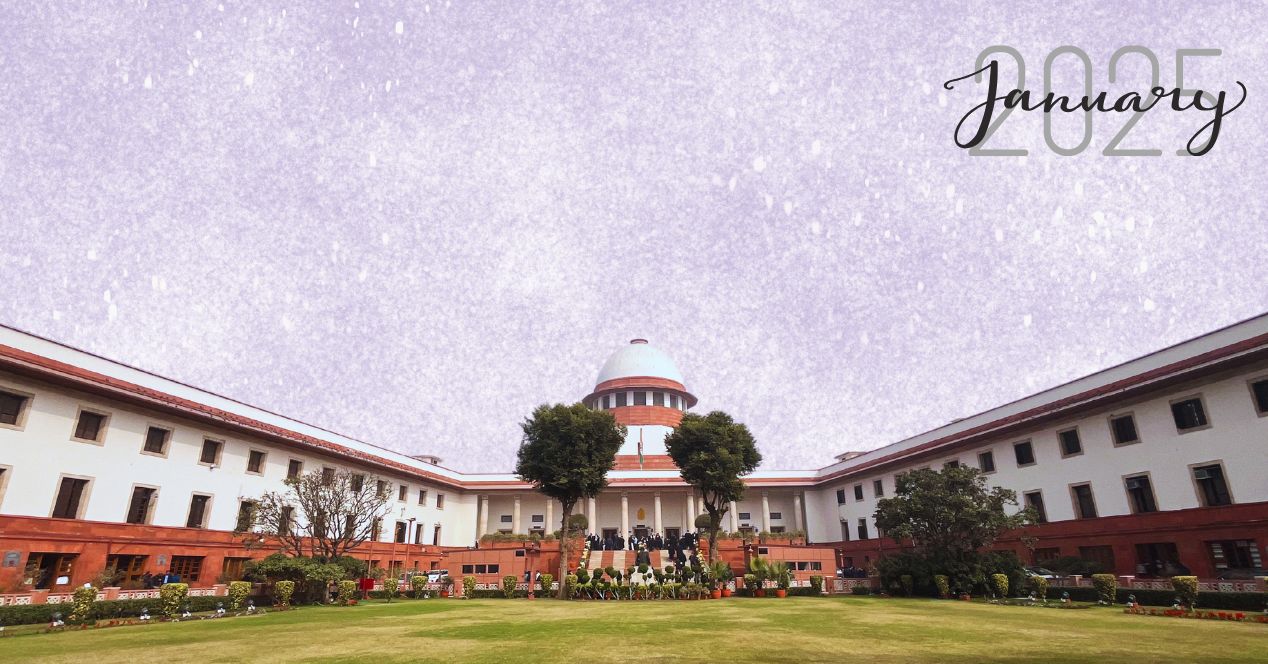Court Data
April 2025: Pendency increases after steep drop in both institution and disposal
In April 2025, the Court instituted 1,589 fewer cases and disposed of 1,533 fewer cases compared to March

The Supreme Court recorded a pendency of 81,801 cases at the end of April 2025. In the same month, the Court received 4029 cases and disposed of 3485 cases.
As seen in Figure 1, pendency increased by 407 cases compared to March 2025. However, it did not go beyond the 82,000 mark, as it last did in the first month of the year.
In April, the Court worked for 19 days. There were holidays for Mahavir Jayanti and Good Friday. The Court functioned at a strength of 33 judges during this period, one less than the sanctioned strength of 34.
As seen in Figure 2, there has been a steady rise in the number of pending cases before the Supreme Court over the past five years. The data up to April 2024 is taken from the Indian Judiciary Annual Report. The April 2025 figure is taken from the National Judicial Data Grid (NJDG).
The pendency in April 2019 was at 58,168 cases which has now increased to 81,801 cases in 2025. A change in counting methodology initiated in November 2022 contributed to the spike: it’s when the count started including all diarised matters including Miscellaneous Applications, Unregistered Matters, Defective matters etc
Further, the pandemic years have also contributed substantially to the spike between 2020 and 2023. This April, there were 1277 more pending cases than last April.
Constitution Bench pendency
As per Figure 3, there are 28 Constitution Bench cases pending—20 five-judge matters, five seven-judge matters and three nine-judge matters. This number has largely remained unchanged, with some minor discrepancies each month, which we surmise is due to a lag in updates on the NJDG website.
The tagged matters are cases pending resolution as they hinge upon the larger constitutional question. A big chunk of these cases get cleared once the Constitution Bench delivers a verdict.
4029 cases instituted, 3485 disposed
As per Figure 4, there has been a noticeable drop in institution and disposal numbers in April as compared to the start of the year. In January and February, the Court disposed of more cases than instituted. However, this pattern shifted in March, where institutions began to exceed disposals—a trend that further intensified in April.
April saw the lowest institution and disposal numbers this year. It managed to clear 3485 cases with 4029 cases instituted. This is a clearance rate of 86.5 percent. The rate has reduced as compared to March 2025 where it was at 89.32 percent.
The positive note is that pendency has not exceeded the 82,000 mark, as the case was in January. However, the Partial Working Days of the Court, which commenced in the last week of May, are likely to further impact these numbers.
As seen in Figure 5, the institution and disposal in April 2025 was significantly lower than April 2024—1128 less institutions and 1302 less disposals.
From 2022, there had been a steady increase from pandemic-induced drops in both institutions and disposals in the month of April. This year, however, saw a reversal of the trend.
Note: In our monthly tracking of institution and disposal at the Supreme Court, we often find discrepancies in the data between the National Judicial Data Grid and the Justice Clock. The Justice Clock, hosted on the Supreme Court’s website, provides real-time updates, while the NJDG, managed by the Department of Justice, collects data from the Supreme Court, High Courts and subordinate courts.




